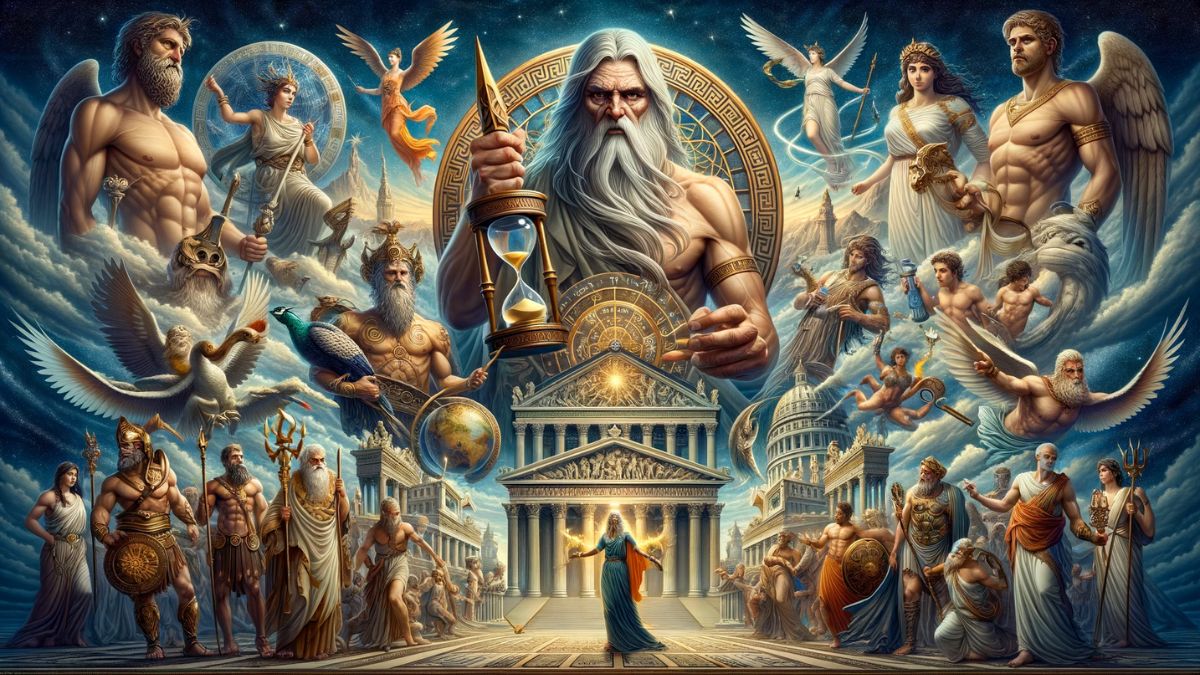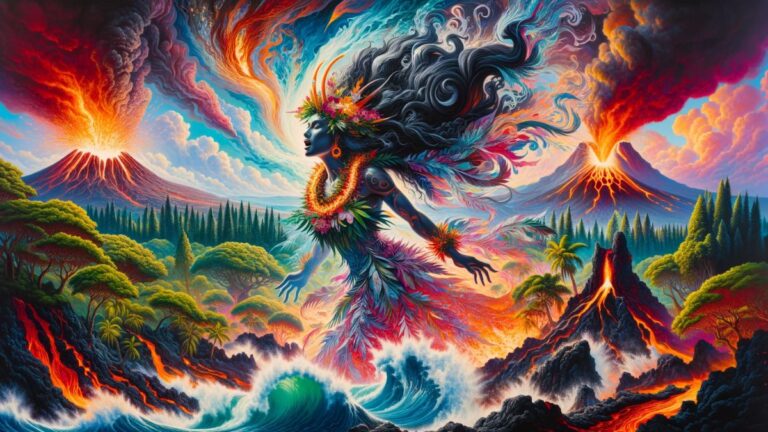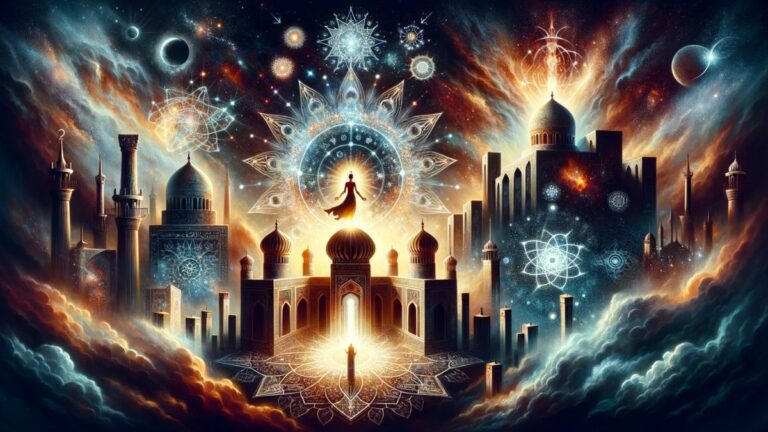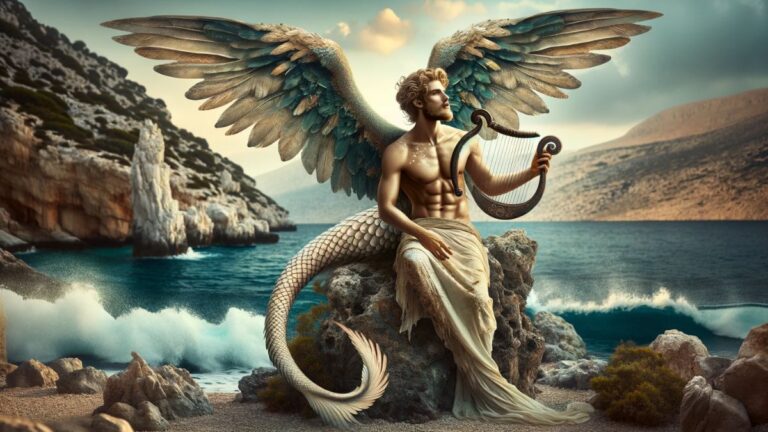Chronos Family Tree: The Unyielding March of Time and Titans

In exploring the vast and intriguing realm of Greek mythology, we’re often drawn to the mighty figures who shaped the cosmos and the tales that continue to captivate us. One such figure is Chronos, the personification of time. His family tree is not just a list of names; it’s a fascinating journey through the unyielding march of time and the era of Titans. This article delves into the depths of Chronos’ lineage, unraveling the connections and the stories that paint a vivid picture of ancient mythology.
Chronos’ Family Tree:
- Uranus (Sky) and Gaia (Earth)
- Parents of the Titans
- Titans: Children of Uranus and Gaia
- Cronus (Ruler of the Titans, father of Zeus, Hera, Poseidon, Hades, Demeter, and Hestia)
- Rhea (Cronus’ sister and wife, mother of Zeus and his siblings)
- Oceanus (Titan of the sea)
- Tethys (Wife of Oceanus, mother of rivers)
- Hyperion (Father of the sun, moon, and dawn)
- Theia (Mother of the sun, moon, and dawn)
- Coeus (Titan of intelligence)
- Phoebe (Titaness of prophecy)
- Iapetus (Father of Prometheus, Epimetheus, and Atlas)
- Themis (Titaness of divine law and order)
- Mnemosyne (Titaness of memory)
- Crius (The least individualized among the Titans)
- Offspring of Cronus and Rhea (Olympians)
- Zeus (King of the gods)
- Hera (Goddess of marriage, Zeus’s wife)
- Poseidon (God of the sea)
- Demeter (Goddess of the harvest)
- Hades (God of the underworld)
- Hestia (Goddess of the hearth)
- Other Notable Offspring
- Prometheus, Epimetheus, and Atlas (Sons of Iapetus)
- Helios (Sun), Selene (Moon), and Eos (Dawn) (Children of Hyperion and Theia)
Chronos: The Embodiment of Time
Chronos stands as a towering figure in Greek mythology, often confused with Cronus, the Titan King. Unlike Cronus, Chronos is the personification of time itself, representing the endless flow of moments that form the tapestry of existence. In ancient Greek art, he’s depicted as a wise, old man with a long, flowing beard, symbolizing the relentless march of time. This entity is not just a deity; he’s the concept of time made divine. His presence in mythology reminds us of time’s unceasing progression, affecting gods and mortals alike. Chronos doesn’t play an active role in the myths like other deities, yet his influence is omnipresent, underlying every myth and legend.
In the philosophical dialogues of Plato, Chronos is differentiated from Cronus, emphasizing his abstract nature. His role transcends the physical realm, entering the philosophical and existential domains. Time, as personified by Chronos, becomes a fundamental element in understanding the universe’s workings in Greek thought. This conceptualization of time influenced not just mythology, but also how ancient Greeks understood their world and their place in it. Chronos, therefore, isn’t just a character in a story; he’s a bridge between the tangible world of the myths and the intangible realm of concepts.
The concept of Chronos also intertwines with the philosophical idea of eternity. Unlike the linear, measurable time we experience, Chronos represents an unending, cyclical time. This distinction highlights the ancient Greeks’ understanding of the universe as something beyond human comprehension and control. Chronos, as an embodiment of eternal time, stands in stark contrast to human life, which is bound by birth and death. This dichotomy between the eternal and the ephemeral is a central theme in many Greek myths, where the gods, existing outside of human time, interact with mortals whose lives are fleeting.
The Titans: Siblings and Consorts
The Titans, in Greek mythology, are the elder gods who ruled the cosmos before the Olympians. They were the children of Gaia, the Earth, and Uranus, the Sky. This first generation of deities included twelve key figures, with Cronus and Rhea being the most prominent among them. The Titans were known for their immense strength and size, often depicted as giants. Their reign was a golden age, a time of prosperity and peace, before the arrival of the Olympians. The stories of the Titans are filled with themes of power, betrayal, and destiny, reflecting the complex dynamics within their family.
Cronus, the leader of the Titans, was notorious for his fear of being overthrown by his children, leading him to swallow each of them at birth. His wife, Rhea, dismayed by his actions, tricked him into swallowing a rock instead of their youngest child, Zeus. This act set the stage for the eventual downfall of the Titans and the rise of the Olympian gods. The relationships among the Titans were intricate, marked by alliances and rivalries. Their interactions reflect the human-like qualities attributed to these deities, despite their immense powers and divine nature.
The Titans not only interacted among themselves but also with other entities in Greek mythology. Their offspring included many famous figures, such as Atlas, who bore the sky, and Prometheus, who defied the gods by giving fire to humanity. The legacy of the Titans extends beyond their rule; their stories, struggles, and personalities deeply influenced Greek culture and mythology. Their fall from power, led by the uprising of the Olympians, marks a significant shift in the mythological narrative, symbolizing the transition from the old order to the new.
The Olympians: A New Era Begins
With the ascent of the Olympians, a new chapter in Greek mythology began. Led by Zeus, the Olympians represented a younger generation of deities who were more dynamic and closer to human experiences. They resided on Mount Olympus and were twelve in number, each overseeing different aspects of the natural world and human life. This shift from the Titans to the Olympians marked a transition in the mythological narrative, from the archaic and abstract to the more personalized and relatable.
Zeus, the king of the Olympians, is a central figure in this new era. He symbolizes leadership, justice, and authority, often depicted wielding thunderbolts as his weapon. His rise to power entailed a series of battles against the Titans, known as the Titanomachy. This epic war ended with the defeat of the Titans and established the Olympians as the new rulers of the cosmos. The Olympians brought with them a different set of values and perspectives, emphasizing human-like traits and emotions, making them more accessible to the people who worshipped them.
The Olympians’ reign was not without its challenges. Their stories are filled with conflicts, both among themselves and with other beings. These tales reflect the complexities of human nature, showcasing emotions like love, jealousy, and wrath. The Olympians interacted closely with humans, often intervening in their affairs, which led to numerous legendary tales and heroic sagas. Their influence extended beyond the realm of mythology, shaping ancient Greek culture, religion, and art. The Olympians, thus, represent not just a group of deities, but a rich tapestry of stories and symbols that continue to fascinate us to this day.
Rhea: The Mother of Gods
Rhea, in Greek mythology, holds a pivotal role as the mother of the first generation of Olympian gods. Married to her brother Cronus, she bore several of the most powerful gods, including Zeus, Hera, Poseidon, Hades, Demeter, and Hestia. Despite her significant role, Rhea’s story is often overshadowed by her children’s. She is depicted as a nurturing figure, embodying the qualities of motherhood and fertility. Her character represents the struggle and resilience of a mother in the face of adversity, as she fought to save her children from Cronus, who devoured them at birth to prevent a prophecy of being overthrown by one of his offspring.
Rhea’s intelligence and cunning were crucial in the dethroning of Cronus. Disguising a stone as her newborn son, Zeus, she saved him from Cronus, leading Zeus to eventually overthrow his father and free his siblings. This act of maternal protection and deception marked a turning point in Greek mythology, setting the stage for the rise of the Olympian gods. Rhea’s actions showcase not only her love and commitment as a mother but also her strategic thinking and influence on the course of mythological events.
The legacy of Rhea extends beyond her role as a mother. She is revered as a goddess of the earth, similar to her mother Gaia, symbolizing the nurturing aspects of nature. In some myths, she is also associated with the flow of time and natural cycles, linking her to the broader theme of creation and destruction in the universe. Her worship in ancient Greece often involved rituals and festivals celebrating fertility and the earth’s bounty. Thus, Rhea’s presence in Greek mythology embodies the interconnectedness of motherhood, nature, and the cyclical nature of life.
The Legacy of Chronos in Myth and Culture
Chronos, as the personification of time in Greek mythology, has left an indelible mark on both ancient and modern cultures. His representation of time as an all-encompassing, inevitable force has influenced various aspects of art, literature, and philosophical thought. Chronos is often depicted as an old man with a scythe, symbolizing the harvest of life, a concept that has permeated through different cultures and epochs, emphasizing the relentless and impartial nature of time. This imagery has been a powerful motif in art, serving as a reminder of life’s transience and the inevitability of death.
The influence of Chronos extends into the realm of philosophy, particularly in discussions about the nature of time and existence. Ancient Greek philosophers, like Plato and Aristotle, delved into the concept of time, using Chronos as a metaphor for discussing its properties and impact on human life. These philosophical explorations have shaped modern understandings of time, influencing scientific, existential, and metaphysical discourses. The idea of time as both a destructive and creative force, as embodied by Chronos, remains a central theme in philosophical inquiries.
In modern culture, Chronos’ legacy is evident in literature, where he is often referenced or symbolized to explore themes of aging, destiny, and the cyclical nature of life. His influence is also seen in popular culture, with references in movies, music, and art, often serving as a metaphor for the human condition. The concept of Chronos challenges individuals to contemplate their mortality and the finite nature of existence, making him a timeless symbol in human consciousness.
Zeus and the End of the Titan’s Rule
Zeus’s rise to power signifies a monumental shift in Greek mythology from the era of the Titans to the reign of the Olympians. The youngest child of Cronus and Rhea, Zeus was destined to overthrow his father, fulfilling the prophecy that Cronus would be dethroned by one of his own children. Zeus’s ascent is not just a tale of power and conquest; it symbolizes the triumph of a new order over the old, the ushering in of a new era in the cosmic hierarchy. His battle against Cronus and the Titans, known as the Titanomachy, was a cataclysmic event that reshaped the structure of the mythological world.
The Titanomachy, which lasted ten years, was a fierce and brutal war that involved all the gods and several Titans. Zeus, after freeing his siblings from Cronus’s belly, led the Olympians against their predecessors. The war concluded with the victory of the Olympians, and Zeus emerged as the supreme ruler of gods and men. This victory allowed Zeus to establish a new order and distribute power among his allies, marking a significant shift in the balance of power in Greek mythology.
The end of the Titan’s rule and the rise of Zeus and the Olympians had a profound impact on Greek mythology and culture. It signaled a change in the portrayal of deities, from the aloof and detached Titans to the more human-like Olympians, who had personal relationships with humans. The stories of Zeus and the Olympians became central to Greek mythology, reflecting the values, beliefs, and struggles of ancient Greek society. Zeus’s rule brought a more structured and moral order to the mythological world, reflecting the social and political changes in ancient Greece during that time.
Echoes Through Time: Chronos’ Influence Today
Chronos’ influence extends far beyond the confines of ancient Greek mythology, resonating through time into the modern world. His embodiment of time has shaped how cultures perceive and interact with this relentless, ever-moving force. In modern times, the concept of Chronos has been adopted and adapted in various fields, from literature and art to psychology and philosophy. His representation challenges individuals to reflect on the nature of time, mortality, and the human condition.
In literature, Chronos often appears as a symbol of the inexorable passage of time and its effects on human life. Authors use this motif to explore themes of aging, legacy, and the transient nature of existence. This has led to a rich tapestry of stories and characters influenced by the concept of Chronos, providing insights into the human psyche and our relationship with time. In art, Chronos is frequently depicted in various forms, from the ancient image of a bearded man holding a scythe to more abstract representations, symbolizing the continuous cycle of life and death.
Chronos’ impact is also evident in the field of psychology, particularly in the study of human perception and experience of time. The concept of time as a relentless, unyielding force affects how individuals perceive their lives, influencing everything from decision-making to emotional well-being. In philosophy, Chronos continues to inspire discussions about the nature of time, its role in the universe, and its impact on human existence. His legacy, thus, is not confined to the past; it is a living, evolving concept that continues to influence and shape human understanding and experience of the world.






